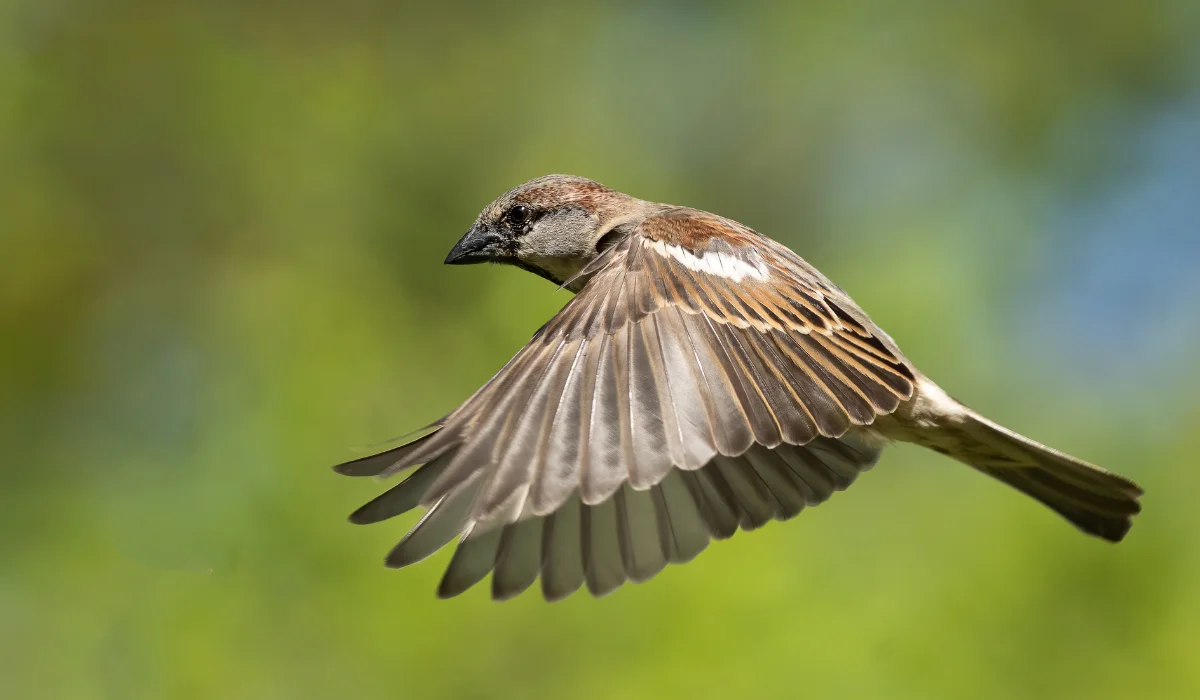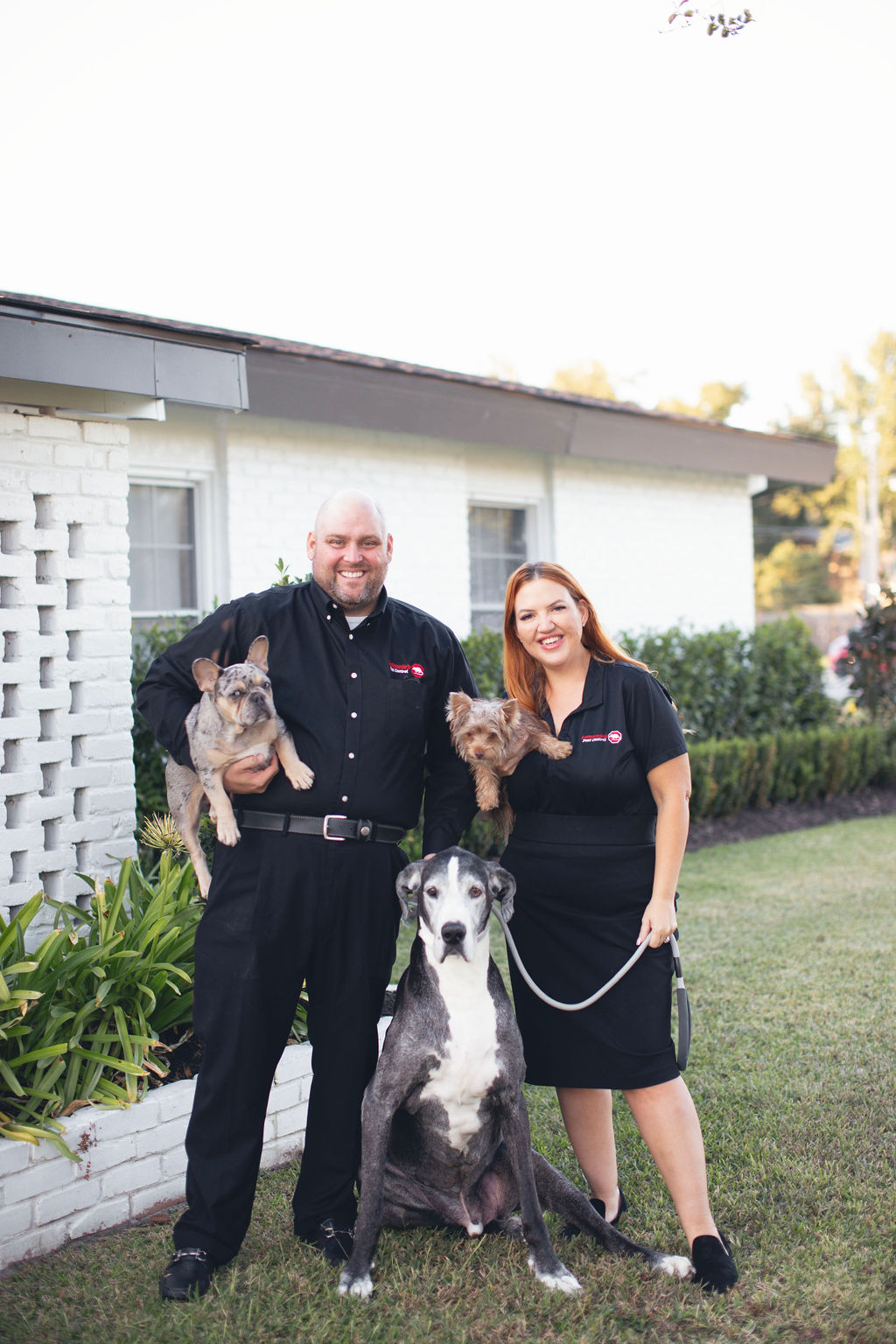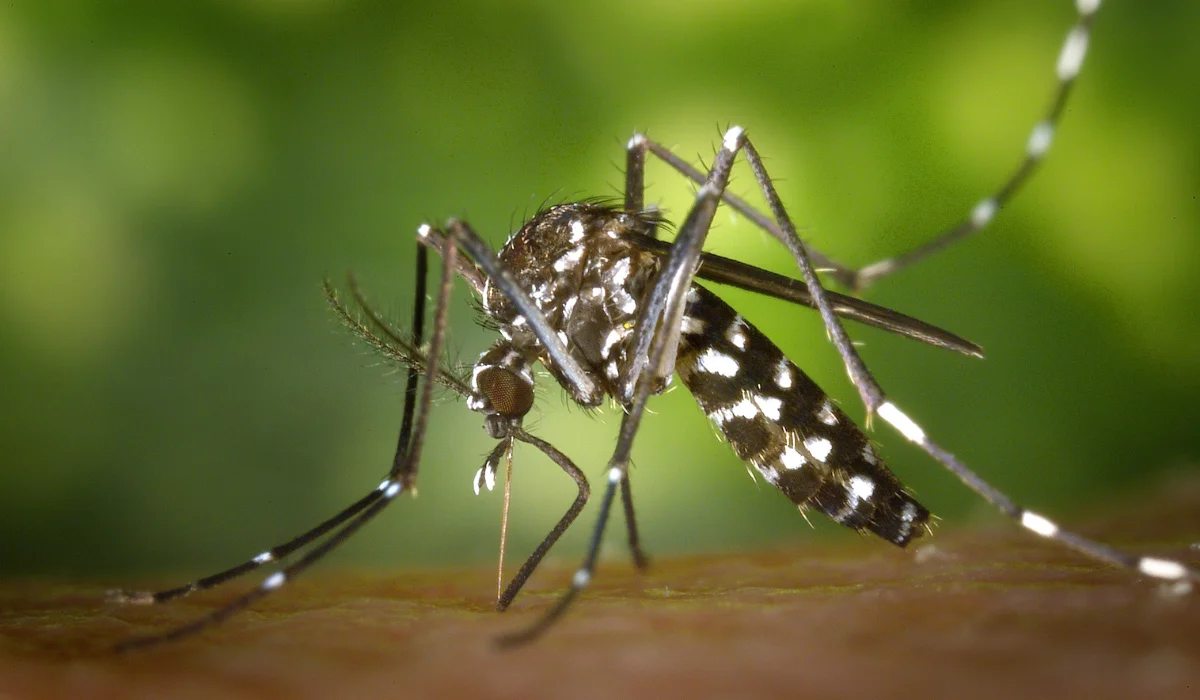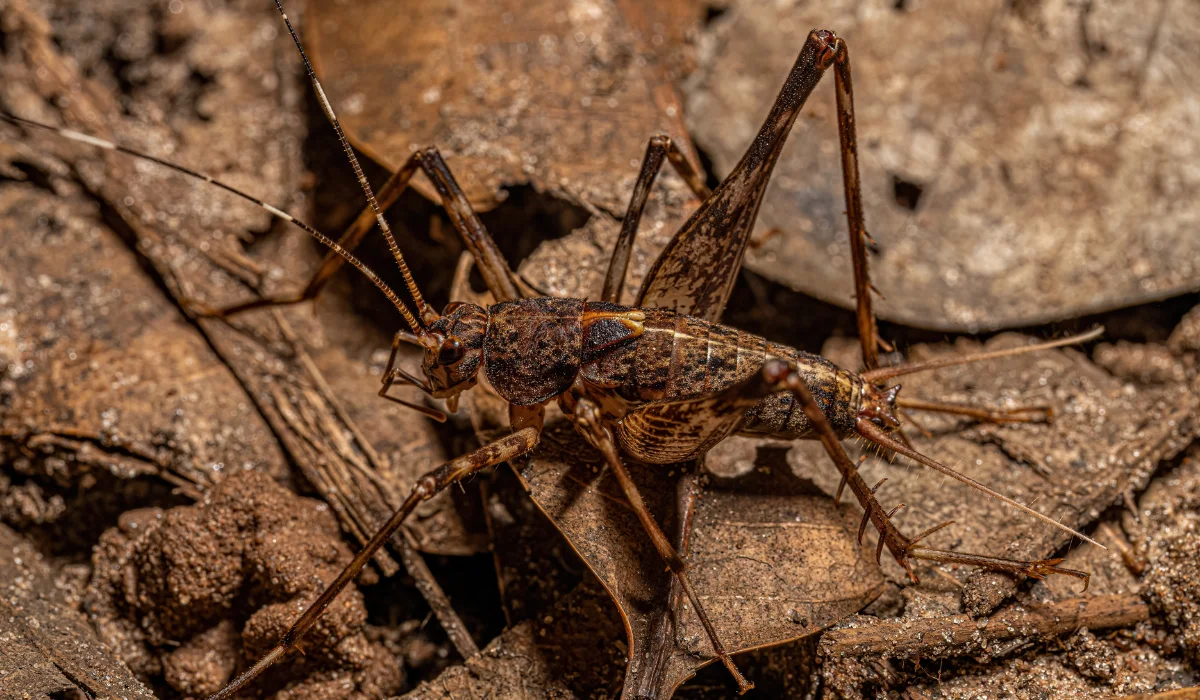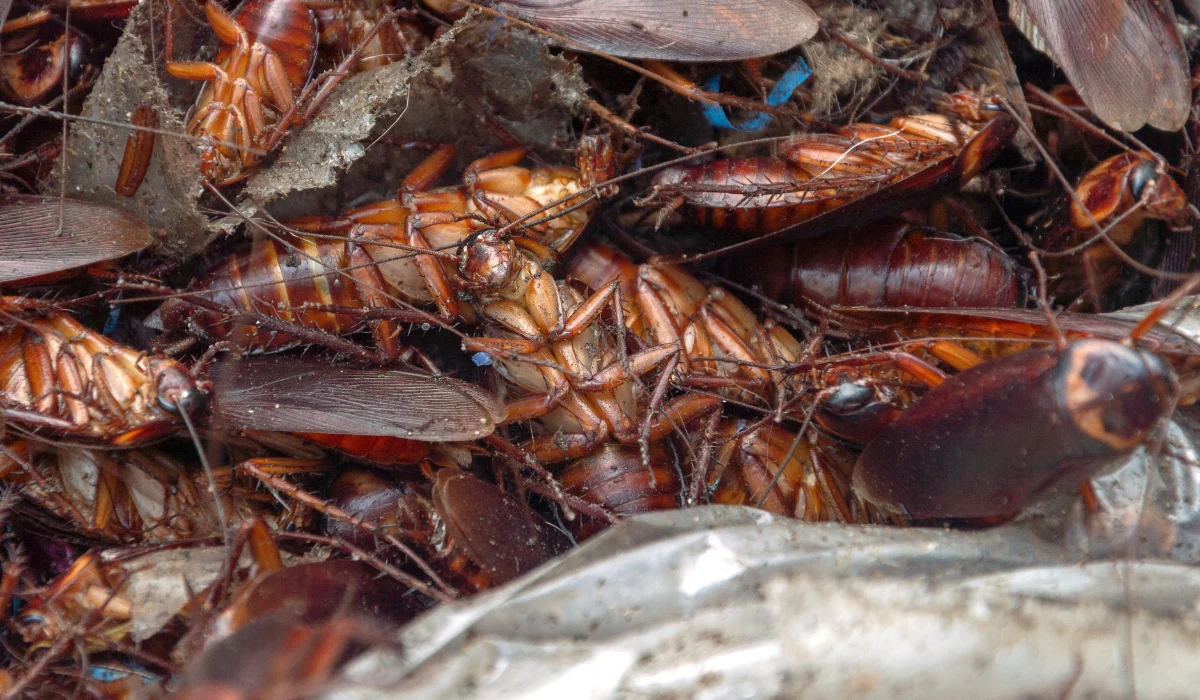If you’re feeding birds in your backyard, you’ve probably had a run-in with house sparrows. These small but bold birds may be common across North America, but they’re also an invasive species that can cause real problems for native birds. They often take over birdhouses, crowd out songbirds, and leave behind messes like droppings under eaves or around bird feeders.
Knowing how to keep them away from your home is key to maintaining a healthy environment for the bird species we want around.
Below are steps that work here in Southern Louisiana and across the region.
Key Takeaways
• House sparrows can push out native birds, but changing bird seed and feeder style helps reduce their visits.
• Nest boxes with small entrance holes and no perches keep house sparrows from taking over homes meant for others.
• Roosting spots like thick shrubs and clutter attract sparrows, so keeping your yard tidy makes a real difference.
• When sparrows stay despite changes, you can use traps, spookers, or ask a professional to remove them.
Choose the Right Bird Feeders
House sparrows prefer easy access, which makes platform feeders and wide-open tube feeders ideal for them. If you’re feeding birds like goldfinches or chickadees, go for tube feeders with short or no perches.
You can also switch to thistle or nyjer seed in your feeders. Sparrows generally ignore it, but it’s a favorite among native species like finches.
Adjust Your Bird Seed Mix
Bird seed blends that contain cracked corn, millet, or sunflower seeds are a buffet for house sparrows. Instead, use safflower seeds and nyjer.
Invasive birds like European starlings and blackbirds don’t usually like these seeds, but still attract colorful backyard birds like cardinals and tree swallows.
Changing up your food sources makes a big difference in who shows up.
Remove Nesting Sites
House sparrow nests pop up in all kinds of places. Eaves, dryer vents, light fixtures, and even inside open garages. These birds prefer sheltered spots and will quickly take over nest boxes meant for other species.
Make sure your bluebird houses have an entrance hole no larger than 1 1/8 inch. This helps exclude sparrows but allows access for native birds. Also, avoid nest boxes with a perch. It gives them an easy advantage.
Reduce Backyard Clutter
Dense shrubs and stacked woodpiles create ideal roosting spots and nesting materials for house sparrows. Trim overgrown hedges and clean up brushy areas to reduce these hiding places. Fewer places to roost or build a house sparrow nest make your yard less inviting for them.
This also creates more space for bird species that prefer open perching spots like woodpeckers and purple martins.
Time Your Bird-Feeding Efforts
If you’re seeing signs of sparrow nests early in the season, consider pausing bird feeding for a few weeks. Removing bird seed during early spring limits easy food sources during the peak nesting push.
Once the peak has passed, you can resume feeding birds with seeds that cater to native birds.
What to Do When Sparrows Won’t Leave Your Home
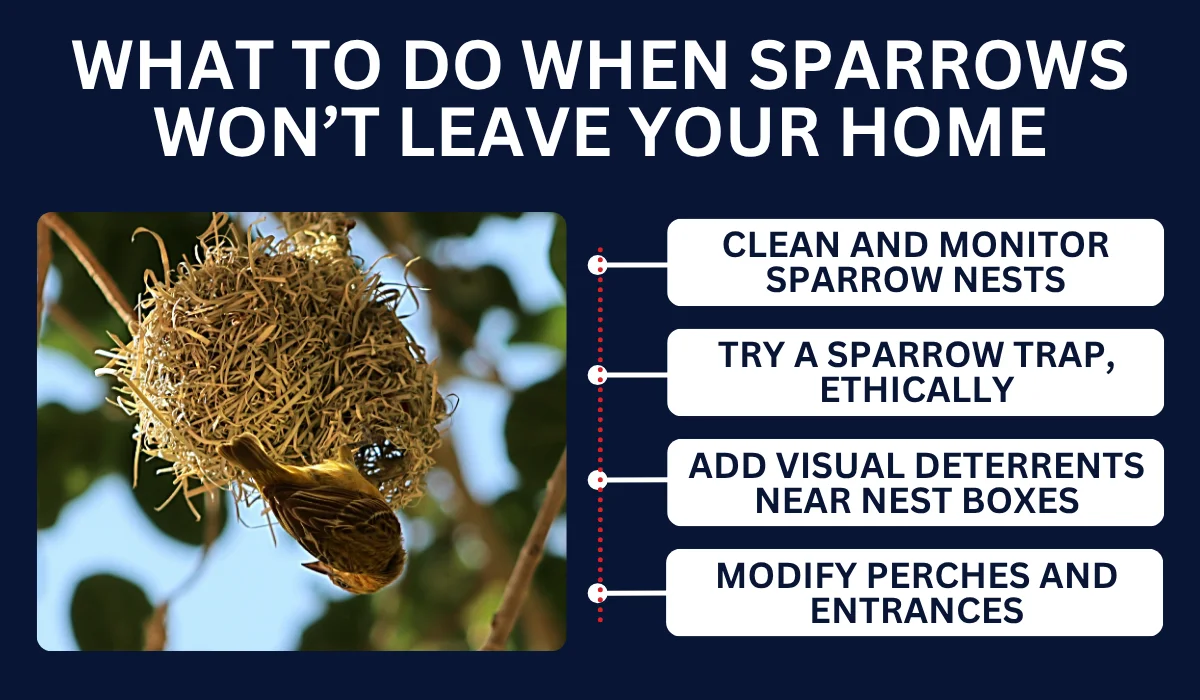
Even after changing your feeders, seed mix, and yard setup, house sparrows may persist. When that happens, it’s time to take a more targeted approach.
These next steps can help you regain control and protect the native birds in your yard.
Clean and Monitor Sparrow Nests
House sparrow nests are usually messier than those of native birds. These are often made with paper, straw, and feathers stuffed tightly into tight spaces.
If you find a sparrow nest in a birdhouse or other structure, removing it early, before eggs are laid, can discourage the behavior.
Always double-check to avoid disturbing protected nestlings or wild birds like wrens or songbirds.
Try a Sparrow Trap, Ethically
When sparrows keep taking over despite your efforts, a sparrow trap may be necessary. These traps specifically target them and can be effective when used correctly. Be sure to follow state regulations and only place traps where they won’t harm native species.
Add Visual Deterrents Near Nest Boxes
Some homeowners find success using reflective tape or pinwheels near birdhouses or bluebird houses. These visual deterrents help keep them away without scaring off native birds.
Mounting a “sparrow spooker” above active nest boxes once nesting begins can protect your bluebird nestlings from harassment.
Modify Perches and Entrances
Perches on nest boxes may seem harmless, but they make it easier for sparrows to dominate. If you’re trying to support species like tree swallows or purple martins, switch to birdhouses without perches and with smaller entrance holes.
Even a small change in your bird control can help deter sparrows from using the box.
Let’s Keep Sparrows Out, And Native Birds In
When house sparrows threaten to overrun your backyard, taking the right steps can protect the native birds you want to see.
At LaJaunie’s Pest Control, we understand how invasive bird species can cause trouble, from house sparrow nests in your vents to droppings under the roofline.
If you’re struggling to keep them away despite changing seed types, modifying birdhouses, or trying deterrents, contact us now.
We’ll inspect your property, identify sparrow hotspots, and use safe, effective methods to get rid of sparrows for good, so you can enjoy birding again without the chaos.
 By: LaJaunie's Pest Control
By: LaJaunie's Pest Control 